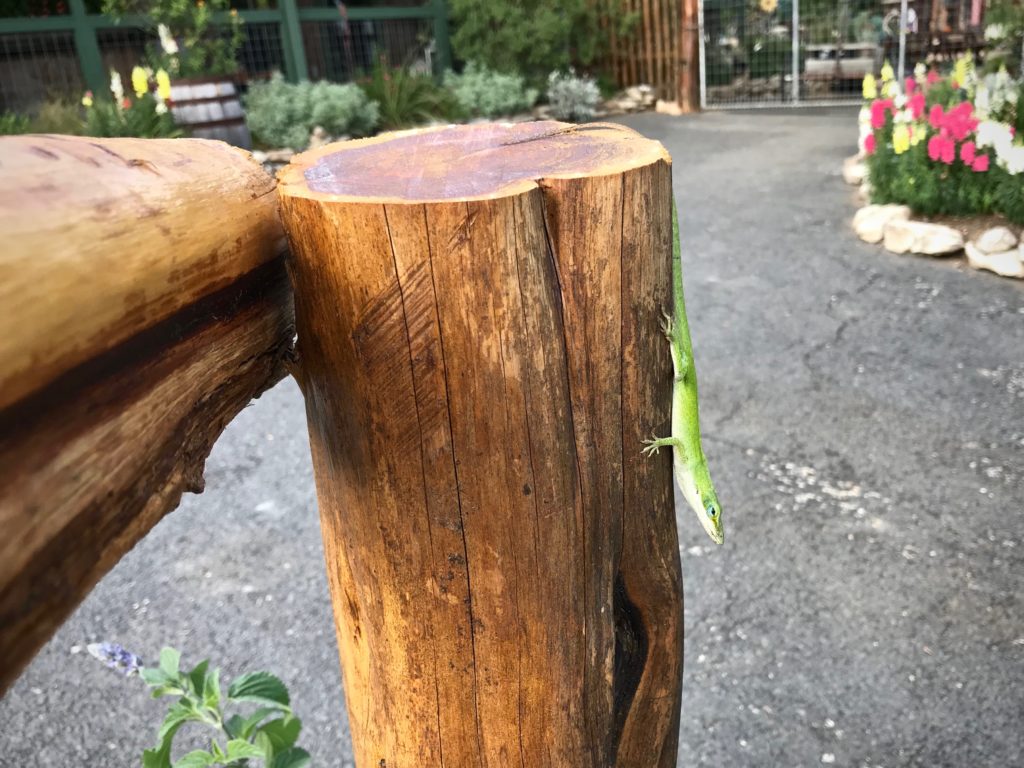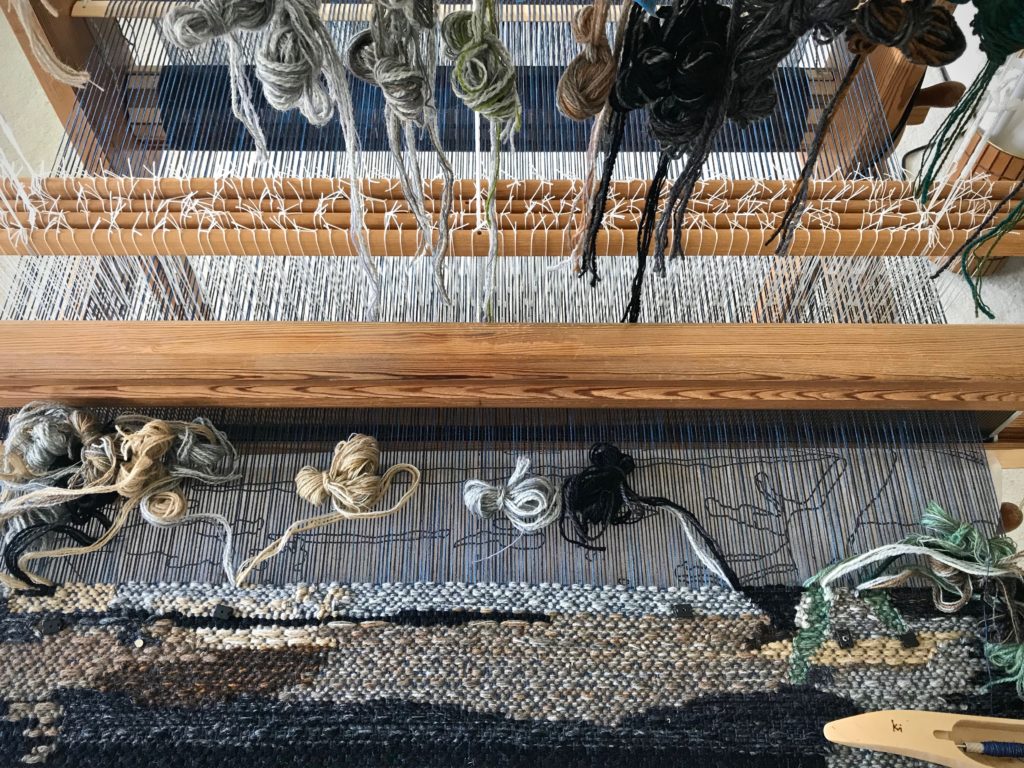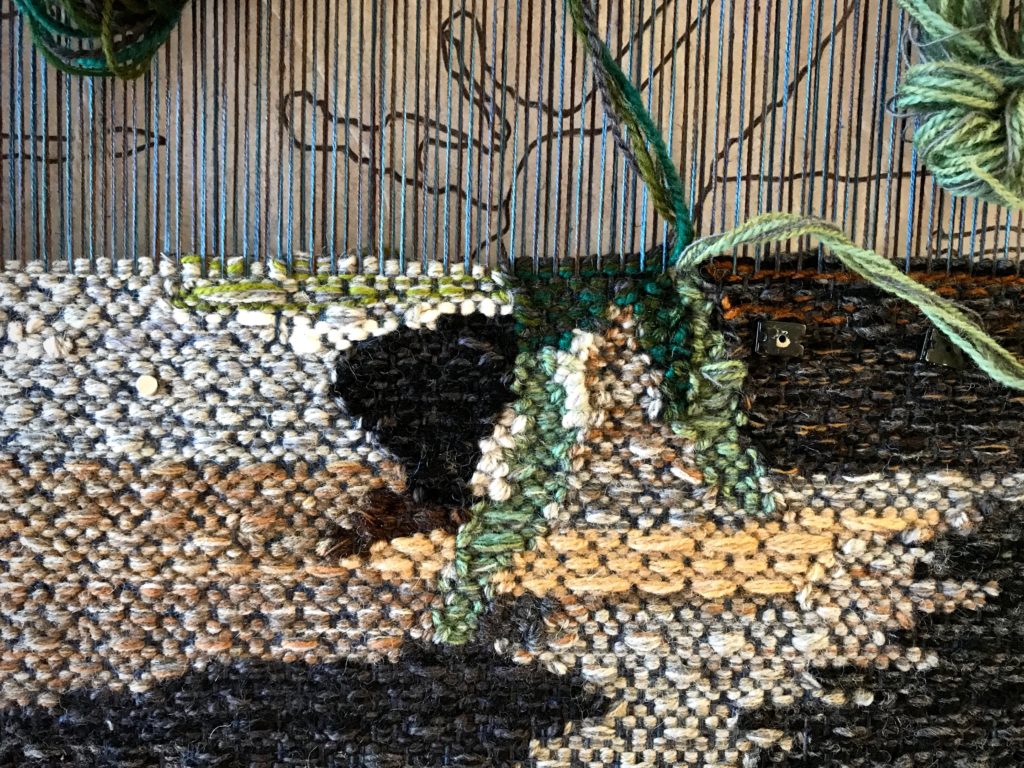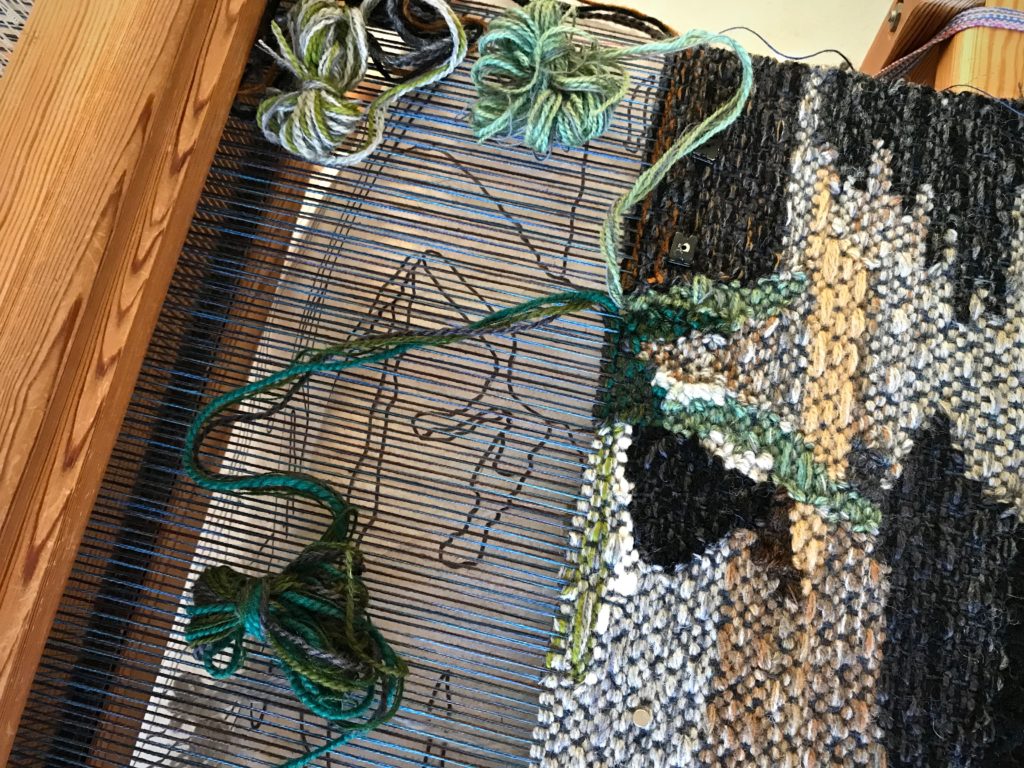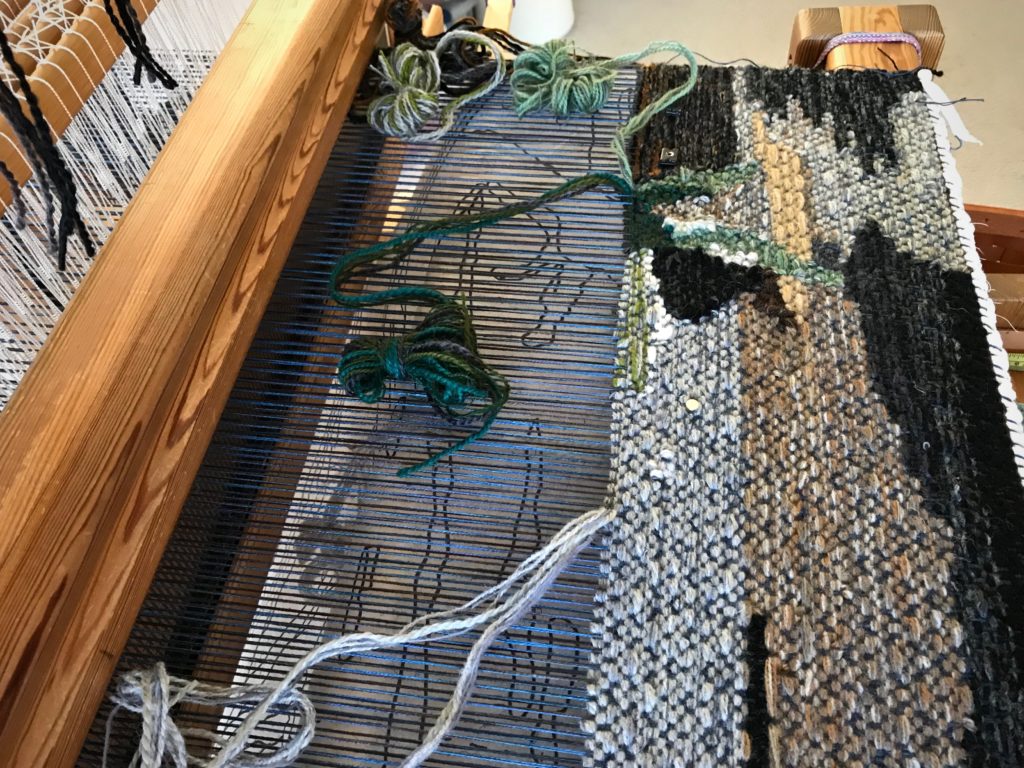Some things are better seen without color. Hence, an enlarged version of my lizard in black and white. Variances in value are not as easily discerned in the full-color print. These subtle value distinctions bring realism to the lizard tapestry. For this reason, I sort all the yarn into small groups of color and value, which clarifies my choices for each wool butterfly.
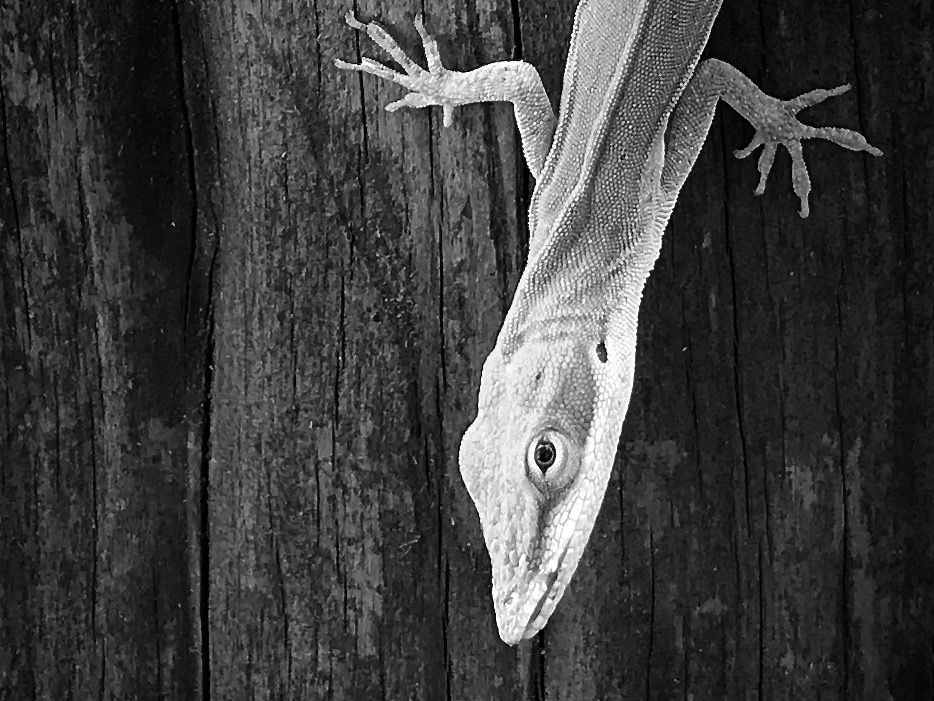
Yarn Sorting Process:
1. Select yarn colors for the tapestry.
2. Group like colors together.
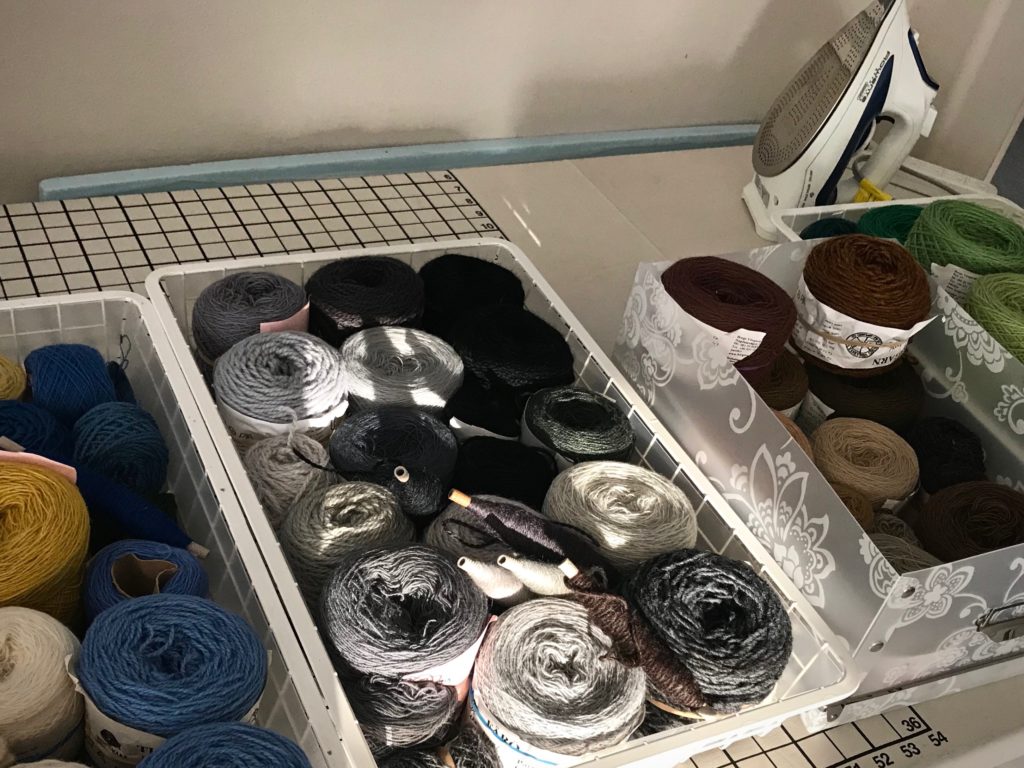
For each color group (I have seven color groups):
1. Arrange yarn on a white background in value order, from light to dark. Take a picture.
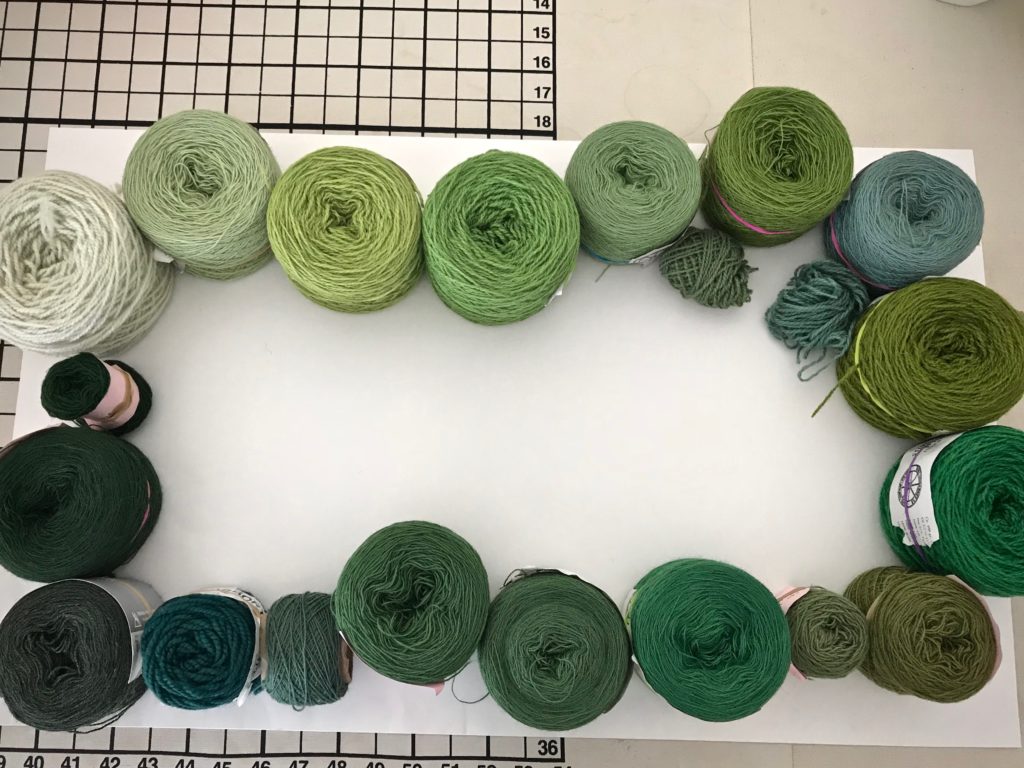
2. Take another picture using the smart phone black and white setting (“Noir” in the filters on my iPhone).
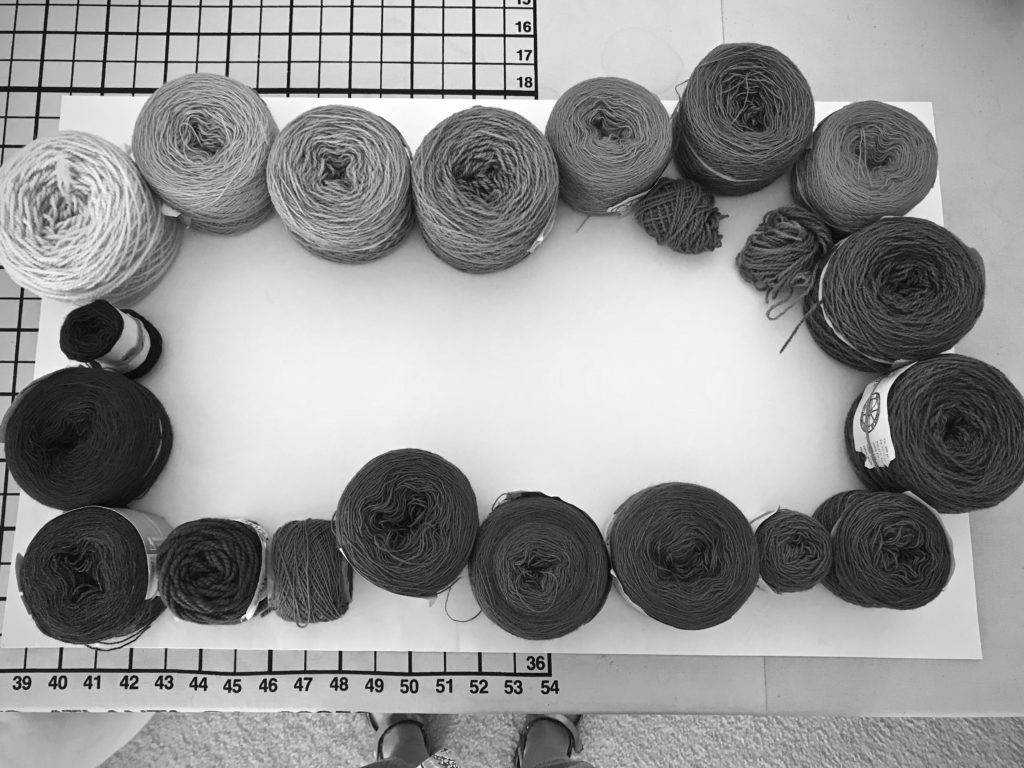
3. Adjust yarn to make value order corrections.
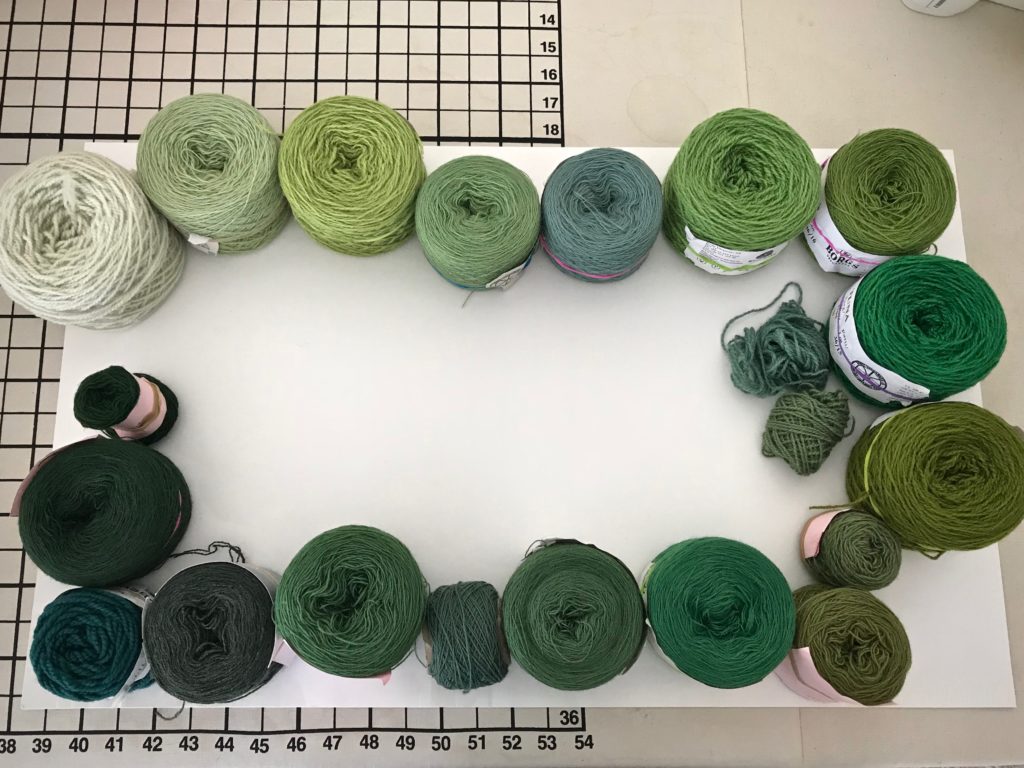
4. Divide the yarn into three value sections. 1. light, 2. medium, 3. dark.
5. Label baskets to hold each yarn section; i.e., “G 3” for green, dark.
The preparation for a project like this is immense. And tedious. But this is a weaving adventure. Indeed, the results may very well be astounding. That’s my hope.
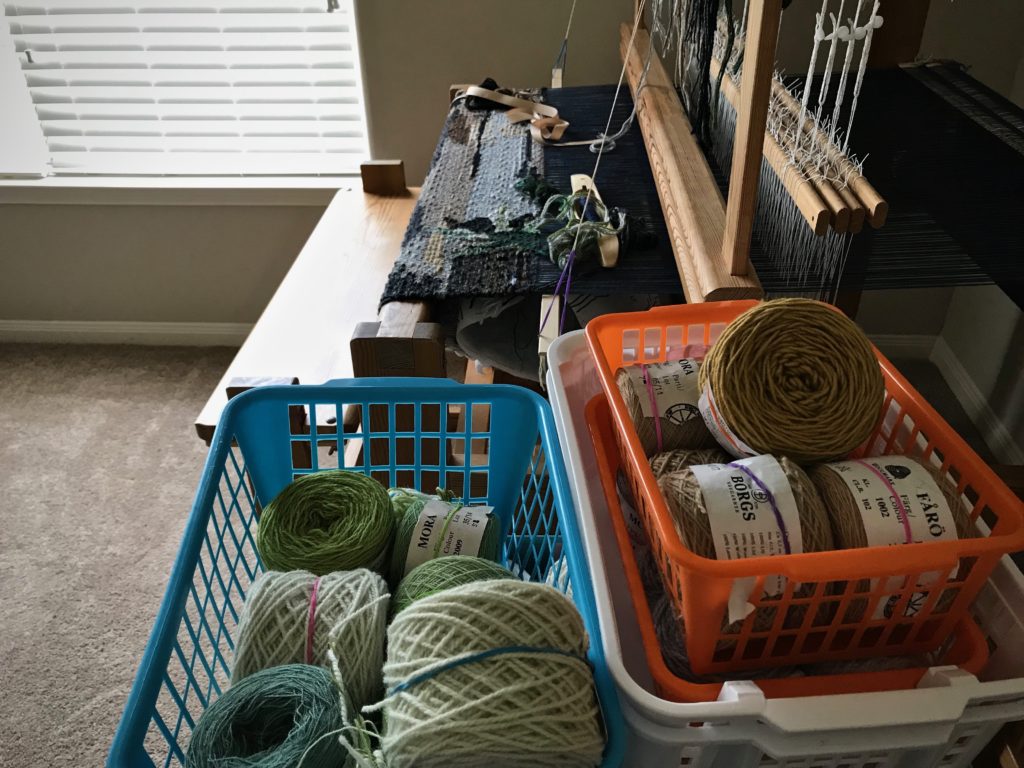
Life itself is a full color project. Immense and tedious. Rise above these earthly things. Our Grand Weaver sees the value distinctions that we miss with our natural eye. What hope this gives! Trusting him through this real life adventure brings assurance of astounding results. Setting my mind on these “above” things turns troubles into treasures whose values will be evident in the final real tapestry.
May you persevere.
With you,
Karen

